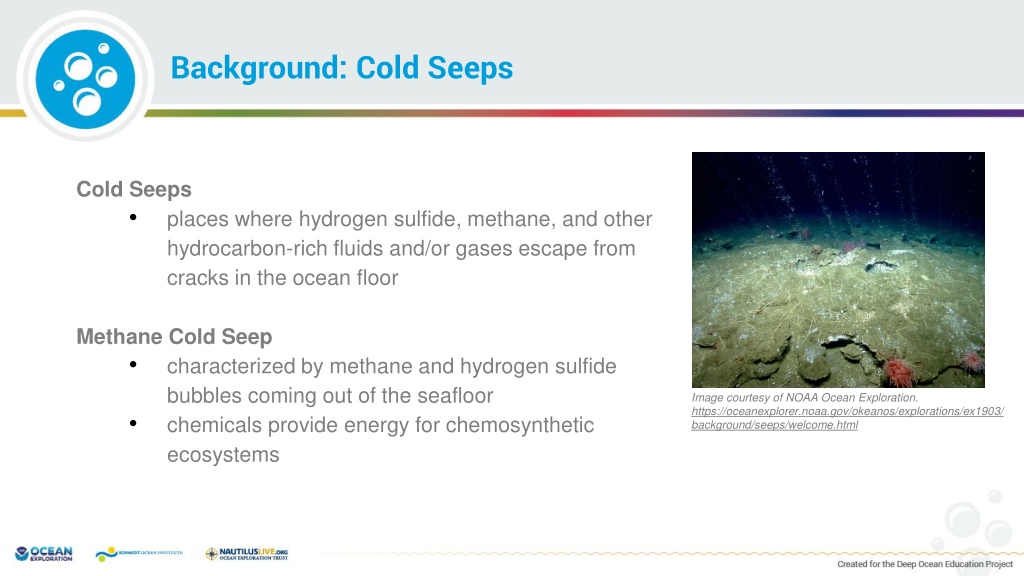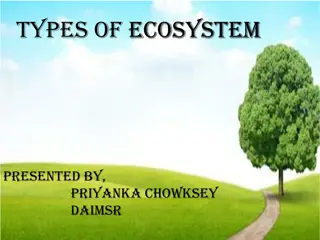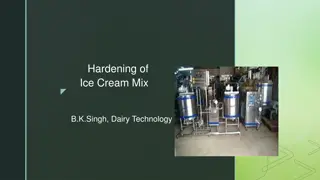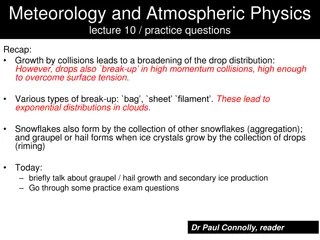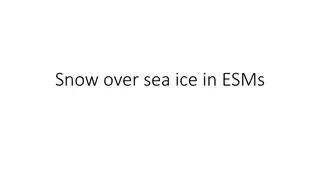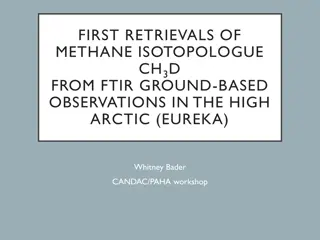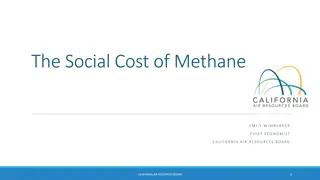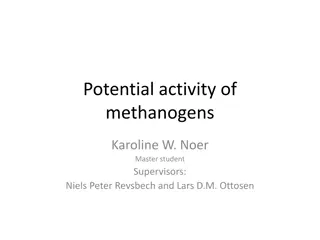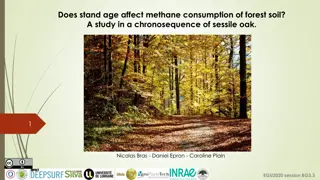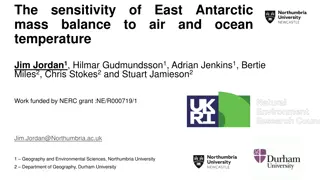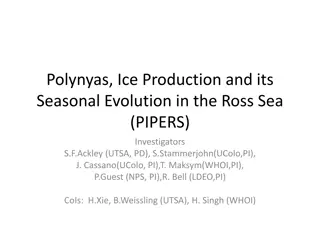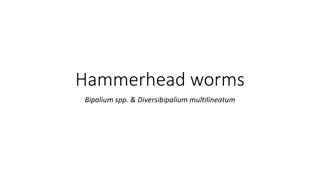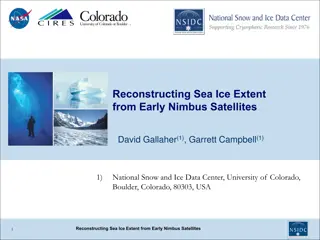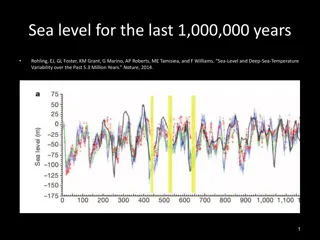Exploring Methane Ice Worms: Deep-Sea Ecosystem Wonders
Discover the unique methane ice worms found in the depths of the Gulf of Mexico, living on methane hydrates in a mysterious ecosystem role. These eyeless worms raise questions about their energy source and survival strategies, intriguing scientists with their unusual habitat and behavior.
Download Presentation

Please find below an Image/Link to download the presentation.
The content on the website is provided AS IS for your information and personal use only. It may not be sold, licensed, or shared on other websites without obtaining consent from the author. Download presentation by click this link. If you encounter any issues during the download, it is possible that the publisher has removed the file from their server.
E N D
Presentation Transcript
Background: Cold Seeps Cold Seeps places where hydrogen sulfide, methane, and other hydrocarbon-rich fluids and/or gases escape from cracks in the ocean floor Methane Cold Seep characterized by methane and hydrogen sulfide bubbles coming out of the seafloor chemicals provide energy for chemosynthetic ecosystems Image courtesy of NOAA Ocean Exploration. https://oceanexplorer.noaa.gov/okeanos/explorations/ex1903/ background/seeps/welcome.html
Experience the Phenomenon: Cold Seeps and Methane Hydrates Cold Seeps and Methane Hydrates Under certain pressure and temperature conditions gas molecules such as methane can crystallize with water molecules to an ice-like structure, so-called methane hydrates. At the MARUM institute in Bremen, scientists are working toward a better understanding of the role of methane hydrates for the deep-sea ecosystems, the global carbon cycle, and the stability of continental slopes. Methane hydrates have received special attention because the energy stored in them may be used by people in the future. The music for this videos was specially composed by Schiller (Christopher von Deylen) within the project "Wissenschaft trifft Kunst" ("Science meets Art"). Dieses Video gibt es auch auf Deutsch: http://www.youtube.com/watch?v=P-bSPdn0qWUlist=PL395BC911BD96DCE3index=0feature=plcp This video is also available with Chinese subtitles: http://www.youtube.com/user/marumTV?feature=mhee#p/c/395BC911BD96DCE3/12/vnncSIQjgcI Source: https://www.youtube.com/watch?v=ahmjHLyF9GM
Think about it! Have you ever seen an unfamiliar insect or other animal? Did you wonder where it lived, what it ate, or how it survived day to day? Scientists think about those same things when they come across new animals.
Methane Ice Worms of the Gulf: Optional In July 1997, eyeless worms were found living on methane ice >500m deep in the Gulf of Mexico. New organism AND a new niche, or a new ecosystem role Scientists had never seen an organism living on methane hydrate. composed of methane gas locked into a water ice crystal structure also may include significant amounts of hydrogen sulfide and oils Adult worms 2 to 4 cm long, single adult worm in each depression density of worms on hydrate surface ~2,500 individuals/square meter related to earthworms - bristles protruding from appendages on each body segment Methane ice worms were the only organism visible on the hydrates, with no apparent predators or prey. Big question: How do methane ice worms obtain organic compounds and energy while living on methane hydrate?
Investigate: Think about it! What is the original source of energy for most food chains on Earth? Why can scientists not assume this to be the case for the methane ice worms? What are possible ways methane ice worms could obtain energy and organic compounds from the methane hydrate?
Investigate: Methane Ice Worm Hypotheses Methane 1) The worms metabolize methane directly. 2 potential sources of energy 2) The worms consume bacteria that metabolize methane. 3) The worms rely on symbiotic bacteria that metabolize methane. Hydrogen sulfide 4) The worms metabolize hydrogen sulfide directly. 3 potential ways ice worms can obtain organic compounds and energy 5) The worms consume bacteria that metabolize hydrogen sulfide. 6) The worms rely on symbiotic bacteria that metabolize hydrogen sulfide.
Investigate: Card Sort - Sample Match Below 15 Cards 15 Cards 2 Cards Sort/Match Select Best Evidence and Reasoning Determine Best Hypothesis
Put the Pieces Together: Reflection Are there any hypotheses that can be eliminated based on the class consensus? Did your group come to a consensus regarding any remaining hypotheses? Which pieces of evidence seem to be most important? Is there consensus within your group about this? What changes would you make to your initial argument after seeing the arguments from other group members? **Make sure your argument directly answers the question, How do methane ice worms obtain their energy and nutrients?
Assessment: Final Written Argument Be sure to include the following: The hypothesis your group selected. The specific evidence and reasoning selected. Rationale explaining how the selected evidence and reasoning supports your selected hypothesis.
